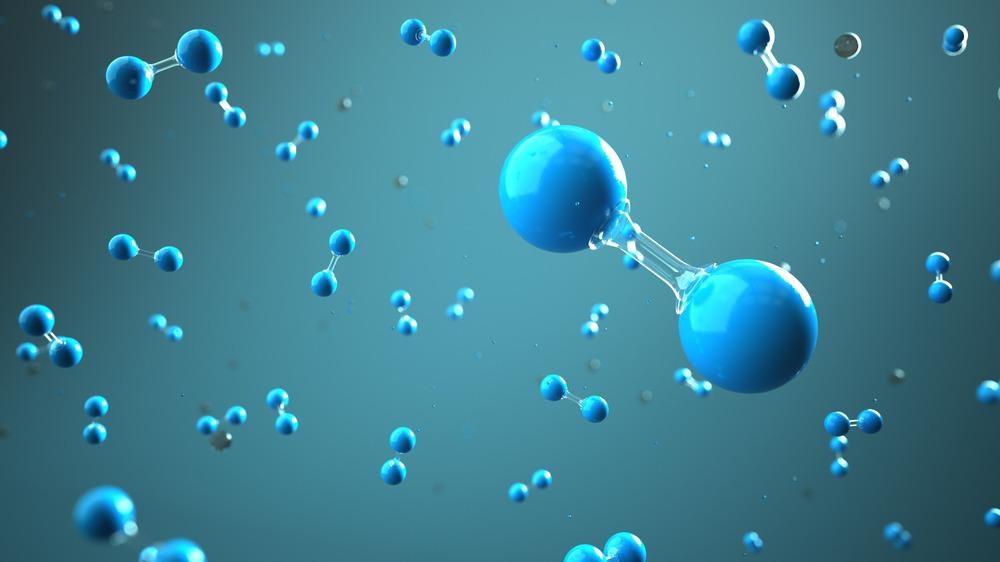
Image Credit: Alexander Limbach/Shutterstock.com
The replacement of fossil fuels with renewable energy sources such as hydrogen energy is one of many steps needed to achieve complete decarbonization of our industrial processes. To further reduce the environmental burden of hydrogen energy production, companies such as Plug Power and Brookfield Renewable are opening the way for green hydrogen energy production to become a reality.
Harvesting Hydrogen Energy
Hydrogen production can be classified into three different categories, including thermochemical, water-based, or biological processes.
As indicated in the name, the thermal processes used to produce hydrogen energy use both heat and a closed-chemical cycle to produce hydrogen from organic materials. Some of the different types of organic materials that can be sources for hydrogen gas include natural gas, coal, or biomass.
The two different water-based processes that can generate hydrogen include electrolysis or direct solar water-splitting. Both electrolytic and solar water splitting processes generate hydrogen by dividing every single water (H2O) molecule into hydrogen (H2) and oxygen (O2). Whereas electrolysis uses electricity to split water into these two molecules, direct solar water splitting, which is also referred to as a photolytic process, instead uses light energy.
A third method used to harvest hydrogen energy includes biological processes that often utilize microorganisms such as bacteria or hydrogen. When these microorganisms interact with organic matter, they will consume and digest biomass to ultimately release hydrogen through a process known as microbial biomass conversion.
Comparatively, the photobiological hydrogen production process instead exposes the microorganisms to sunlight, which will eventually lead to the transformation of water, as well as organic matter in some cases, into the final hydrogen product.
Blue vs. Green Hydrogen
Although hydrogen is technically a colorless gas, it is often distinguished by specific colors, depending on the type of process used to manufacture it. For example, blue hydrogen is a clean alternative to traditional hydrogen energy. Moreover, blue hydrogen is produced through a process known as steam methane reformation, which is followed by carbon capture and storage to prevent the release of any potentially harmful emissions.
Although the amount of carbon released during the production of blue hydrogen is significantly lower than alternative approaches, it is not considered a completely emission-free process.
Alternatively, green hydrogen production aims to eliminate the release of any emissions by the end of this process. So far, green hydrogen production has been based on electrolytic processes, which require both a large electrolyzer and sizeable amounts of electricity to be at the system’s disposal.
The Reality of Transitioning to Green Hydrogen
To remain completely emission-free, the electricity used in the production of green hydrogen must be sourced from renewable sources such as wind, solar, or hydropower.
While feasible in theory, one of the biggest challenges limiting the implementation of green hydrogen power plants is the lack of large electrolyzers capable of meeting the energy demand. The generation of renewable electricity is costly, further limiting the ability to expand green hydrogen energy production. Another limitation associated with hydrogen energy is its low density, making it difficult to store and transport this energy source to different locations.
Despite these challenges, green hydrogen is considered an ideal replacement for the fossil hydrocarbons currently used throughout much of the world. Many of the industrial processes presently used to produce other types of low-carbon fuels require green hydrogen's initial production as a precursor. Therefore, these industries could theoretically reduce the time needed to produce their energy products by transitioning to a green hydrogen-producing plant. An additional advantage of green hydrogen energy is its versatility, as its potential applications range from heating and long-term energy storage to modes of transportation.
Advancing Green Hydrogen with Plug Power
To reinvigorate interest in producing a green hydrogen energy plant, Brookfield Renewable has recently agreed to supply Plug Power with 100% of the electricity that will be needed for this facility to restart its green hydrogen plant.
The power supply deal will allow Plug Power to produce 10 tons of liquid hydrogen gas each day from 100% renewable electricity sources.
Plug Power aims to produce more than 50% of its hydrogen energy from entirely renewable sources by 2024. This partnership is a monumental step forward to achieving that goal.
In addition to advancing their clean energy agenda, the facility supported by Brookfield will also be one of North America’s first industrial-scale green hydrogen energy projects. This revolutionary start to producing green hydrogen energy in this area of the West will hopefully support the decarbonization of the transportation sectors and expand the industrial application of this energy source in facilities across this continent.
References and Further Reading
Office of Energy Efficiency & Renewable Energy. Hydrogen Production Processes. [Online] Available from: https://www.energy.gov/eere/fuelcells/hydrogen-production-processes
Deign, J. (2020) So, What Exactly is Green Hydrogen? [Online] Available from: https://www.greentechmedia.com/articles/read/green-hydrogen-explained
DiLallo, M. (2020) Brookfield Renewable to Supply Plug Power’s First Green Hydrogen Plant With Renewable Energy. [Online] Available from: https://www.nasdaq.com/articles/brookfield-renewable-to-supply-plug-powers-first-green-hydrogen-plant-with-renewable
Plug Power. Green Hydrogen Production is Paramount. [Online] Available from: https://www.plugpower.com/hydrogen/hydrogen-adoption/green-hydrogen/
Disclaimer: The views expressed here are those of the author expressed in their private capacity and do not necessarily represent the views of AZoM.com Limited T/A AZoNetwork the owner and operator of this website. This disclaimer forms part of the Terms and conditions of use of this website.